Having been a long-time (since the early 20th century) user of bolt-action Mauser rifles and carbines in 7.65x53mm chambering, Argentina’s armed forces began thinking in adopting a semi-auto rifle shortly after World War II, if possible, with local manufacture. This was more strongly implemented in the early 1950s during the second administration of President Jan Domingo Perón. An early attempt (https://www.thefirearmblog.com/blog/2017/05/04/argentinas-sturmgewehr-setting-record-straight/) was the CAM 1 clone of the German StG44 Sturmgeweher in the original 7.92x33mm, which did not progress beyond the construction of a handful of prototypes. This was followed with copies of the M1 Garand by FMAP-DM – Fábrica Militar de Armas Portátiles -Domingo Matheu, in Rosario, and the M1941 Johnson by IAME – Industrias Aeronáuticas y Mecánicas del Estado, in Cordoba, both in 7.65x53mm, which went no farther. It is reported that Argentina was, at one time, also interested in Melvin Johnson’s M1947 auto carbine, the “Daisy Mae”. It would take twenty or so additional years until another step was taken.

This is how the very first FAA prototype looked like. Proprietary 30-round magazines were used throughout the development years, as well as a rearwards-folding bipod.
In 1975, FMAP-DM received from the Estado Mayor General del Ejército (Army General Staff) the preliminary technical requirements for a 5.56x45mm FAA (Fusil de Asalto Argentino, Argentine Assault Rifle), a design team led by Enrique Chichizola then assembling in Rosario to carry out the task of what was known as “Proyeto Código 10.0187”. The first of five FAA prototypes was completed in mid-1979, the weapons being intensively tested at the Domingo Matheu Factory and receiving continuous modifications dictated both by the in-house development phase by changing official requirements. Anyway, a pre-production batch of approximately 50 examples of what was later called the FARA 83 (Fusil de Asalto República Argentina 1983) was completed in the 1982-1983 period, those finding their way to selected Argentine Army units for field testing. They were reportedly followed by “a few hundred” additional rifles before the ambitious indigenous rifle program came to an end, under budgetary cuts forced during the administration of President Carlos Menen in the mid-1980s.
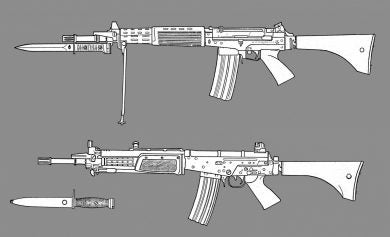
Comparative drawings of the first FAA (top) with a later FAA 81 transitional model. Major changes can be seen in the shape of the upper receiver, the handguard, and the position of the charging handle (from 90 degrees left to 45 degrees right, forward).
Throughout its evolutionary life, the Argentine assault rifle received countless modifications, so that technical specifications varied accordingly. Let’s say that the “average” FAA/FARA was a selective-fire weapon (700-750 rounds per minute cyclic rate of fire), gas-operated with a conventional piston/rod/bolt carrier configuration with a two-lug rotating bolt breech lock. The barrel fitted was 452mm in length (six RH grooves, 1:9in pitch), adequate for both the then-common M193 round and the new SS109 cartridge that was becoming popular at the time. The proprietary, steel-made 30-round magazines then used were expected to be later replaced with STANAG models if large-scale production took place.

Prototype Number 0015, seen here, featured a synthetic cylindrical handguard and a foldable stock of the same material, its pistol grip having clearly come from a FAL rifle.
The rifle’s body was primarily made of steel stampings, the first prototype’s foldable wooden stock later giving way to a synthetic unit with a small internal compartment that housed cleaning items. At a later stage, PARA-FAL metal tubular stocks were used, those incorporating a plastic cheek rest in which the cleaning stuff was contained. In its final configuration, the FARA 83 had the following specifications: length overall, 1,000mm; length with the stock folded, 745mm; weight with empty magazine, 4,2kg; weight of optional foldable bipod, 0.4kg.
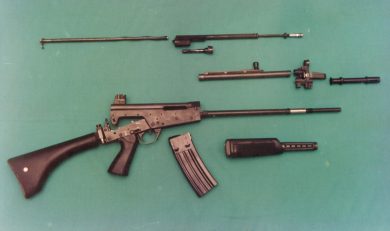
A partially field-stripped FAA 81, whose synthetic handguard of slimmer profile incorporated a perforated metal jacket for thermal insulation/barrel ventilation.
Additional information will be found in the photos and captions used in this article.
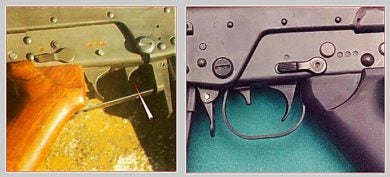
These comparative views of an early (wooden pistol grip, foldable trigger guard for gloved use) FAA and a later model show the applied safety lever forward of trigger. It will be noted that the dots-marked, semi-auto/full-auto fire selector positions are inverted.

Different stock, handguard (missing, gun on top), and charging handle configurations are easily noticed in the three examples shown here.

Author about to remove the magazine from an early (slim, smooth handguard) FAA during a shooting session at FMAP-DM, in Rosario, in the early 1990s.
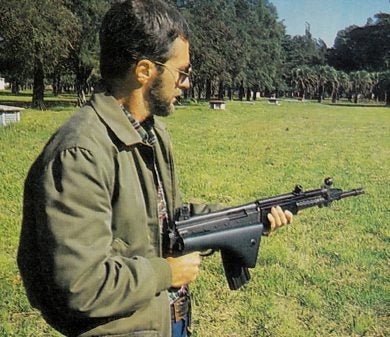
The same gun with the synthetic handguard folded to the right side. Position (right or left) of the forward-located charging handle could be chosen by individual operators.
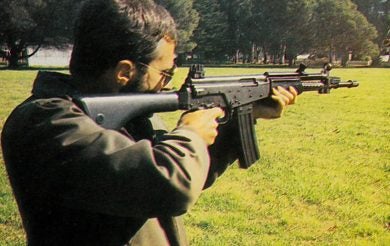
The FAA/FARA (actual designations changed frequently) ready to go! The rotary-drum rear right had two apertures (200-400m) and an open notch for 100m use, radius being 524mm.
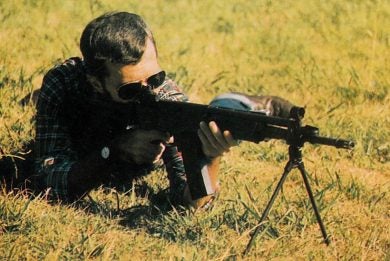
A foldable bipod weighing 0.4kg was available to most versions, the one shown here being the later FARA 83, with the cylindrical handguard and the PARA-FAL-based foldable stock. The bipod doubled as a wire cutter, of course…


This may be called an “intermediate” development version of the Argentine indigenous assault rifle.
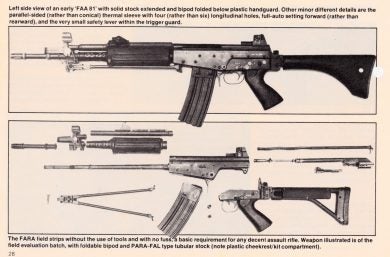
Illustration from an author’s article in the 1990 edition of Harris Publications’ Special Weapons magazine. Gun on top is an early FAA 81, while the bottom example is of the field evaluation batch, a.k.a. FARA 83.
EDIT: I just found a bunch of FAA/FARA pics not previously located, Here they are, no captions included, but most are self-explanatory. Enjoy!
EDIT II: Higher-resolution copies of all photos are here: http://imgur.com/a/NUxT1




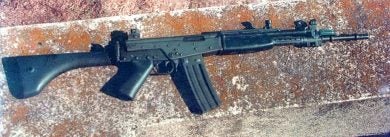

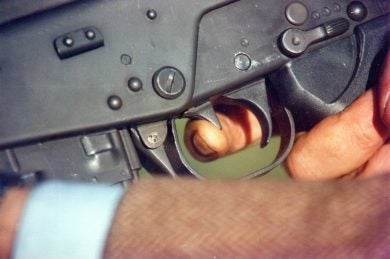
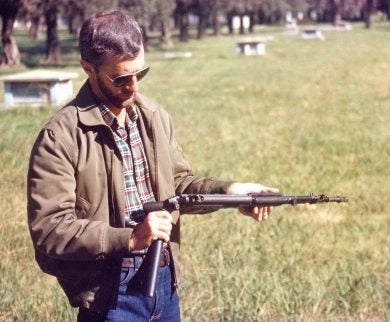



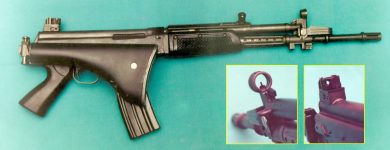


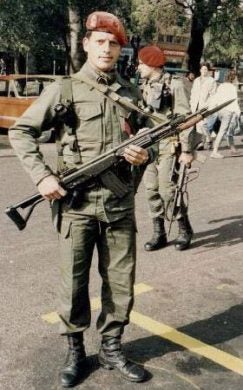
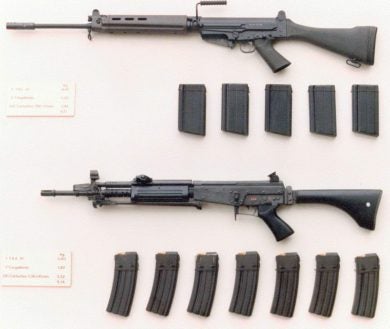

The guy with crossed arms is Enrique Chichizola, major responsible for the FAA/FARA design!!!
 Your Privacy Choices
Your Privacy Choices
